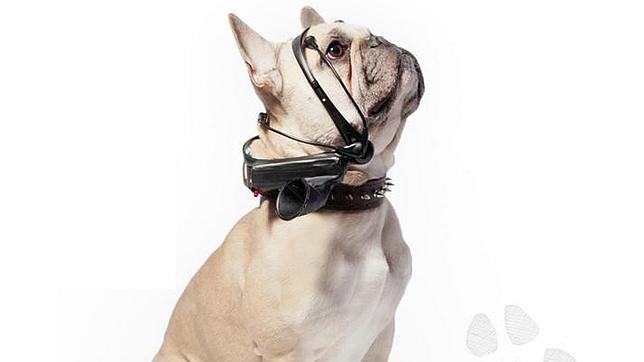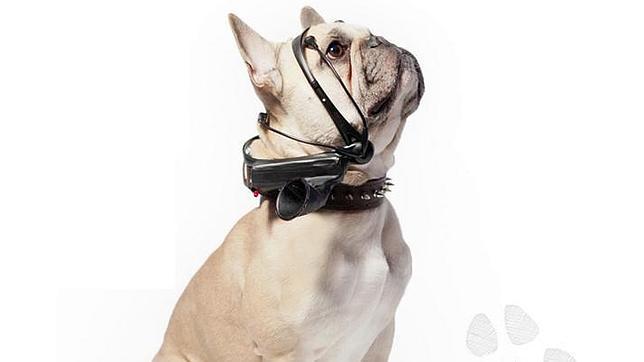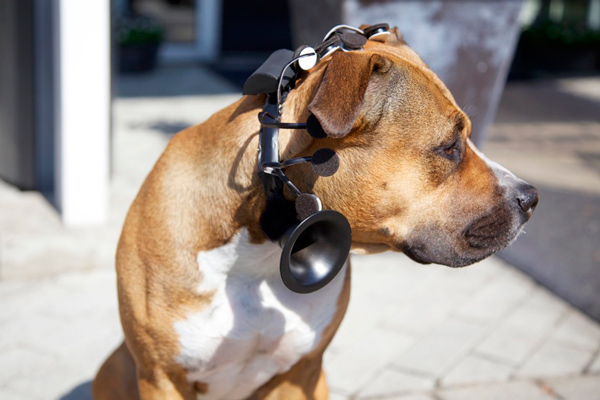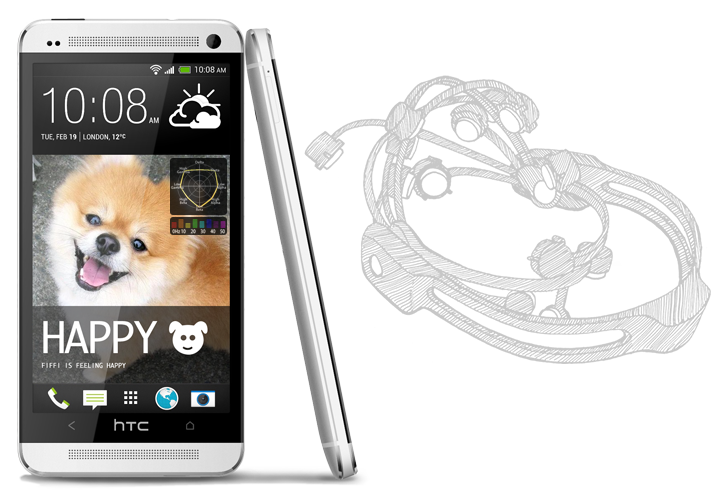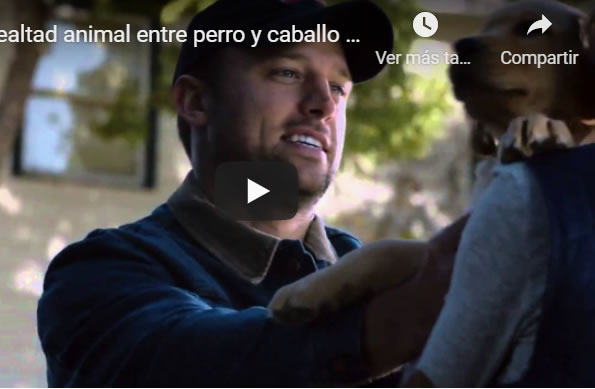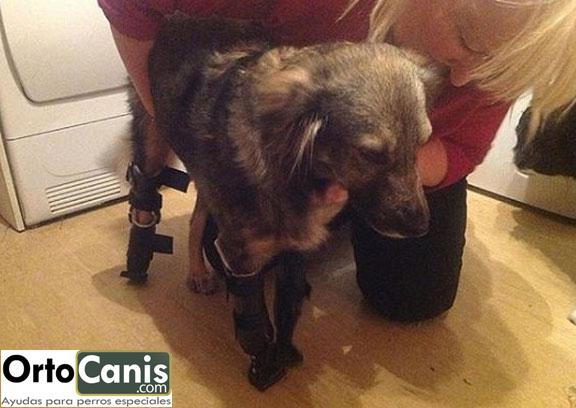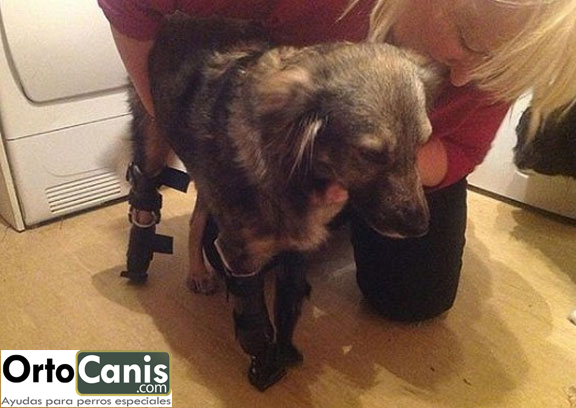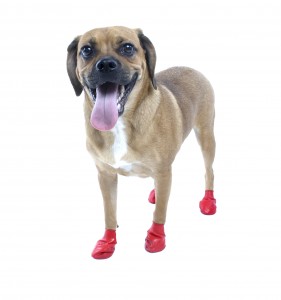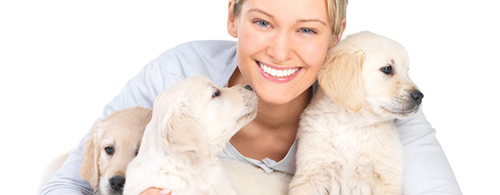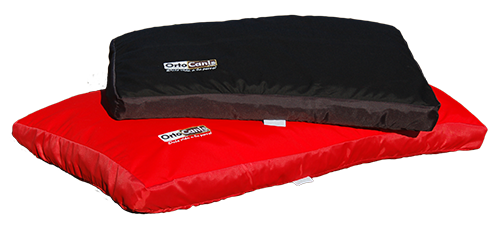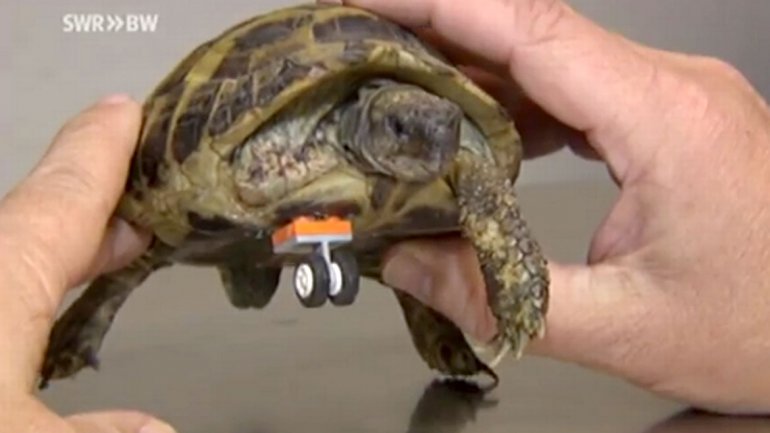From a small Scandinavian research laboratory, the team at the Nordic Society for Invention and Disconvery is developing a device that translates dog thoughts into words. As explained by its creators on the website of the product, to carry out this project they have used the latest technology in microinformatics and electroencephalography, systems that allow analyzing the thought patterns of animals.
It is a kind of helmets that transport thoughts like a swarm of electrical signals through encephalogram sensors capable of deciphering this activity. Then a computer interface converts them into words, which ‘come out’ through a speaker attached to the device. Among these patterns, the most common ones found are: “I’m tired,” “I’m excited,” and “I’m hungry.”
In times when brain activity is very intense when meeting someone, experts translate it in the program as “who are you?” In this sense, experts have explained that dogs “think” in a different way than humans, since the signals of the brain of these animals indicate emotion, that is, the activity shows more a “mental state” than a “thought”.
At the moment the device is in English, Mandarin, French and Spanish, as indicated on their page, where they add that they are working in different voices, so that each owner chooses the one that best suits his dog. This project has been funded by the inventors themselves who, encourage their potential buyers to acquire their product, “which might not be perfect”, to “show their support for research” that may come in the future and that, in their opinion, “will break the language barriers between animals and human beings”.
Sources: www.abc.es, www.nomorewoof.com
The days before the Super Bowl the big companies always create some really good ads. In the 2014 edition Budweiser has created a unique ad, which will probably be one of the best this year. It is a short story about a golden retriever puppy and his friend – a horse. We found it exciting and we want to share it with all of you. If it becomes a protector and not a breeding farm they embroider it. Everything will go.
Glory was a stray dog that was beaten to the point of injury in such a way that its two front legs and one hind legs had to be amputated. Now he is living a second chance that will allow him to walk again.
This dog lives in Romania and a few months ago was brutally assaulted. A woman who had been caring for him took him to the vet and learned that three of his legs had to be amputated.
Vanessa Bamkin saw the photos of Glory online and decided to save the dog that is only 4 years old. Mrs Bamkin and her husband paid for Glory’s vaccinations and travelled to Romania to take the dog home to the UK.
The Bamkins thought about giving Glory a more comfortable life and decided to raise funds through the internet. The surprise came when they managed to raise about 3,500 euros based on donations. This allowed them to acquire the three prostheses that Glory needed, being the first dog with triple prostheses on its legs in Europe.
Since Glory began using the prostheses, they have had to do tests to adjust them well.
“The case is not going to be to put three new legs on Glory and start running. This is a long-term project.” The canine physiotherapist commented. “Once she gets used to her new paws, she will have a second chance to live.”
 On many occasions we face the decision making that involves maintaining care for our dog and reducing expenses without affecting their quality of life. In this post we explain some steps to follow to do this successfully and be sure that it does not have a positive impact on both the dog and you.
On many occasions we face the decision making that involves maintaining care for our dog and reducing expenses without affecting their quality of life. In this post we explain some steps to follow to do this successfully and be sure that it does not have a positive impact on both the dog and you.
Benefits of living with a dog and expenses at home
28% of families make ends meet with difficulties in Spain. And 10% admit that they accumulate delays in the payment of receipts.
Living with a dog, like expanding the family with a child, involves expenses.
Living with a dog implies responsibility, care and, like expanding the family, necessary expenses. The new member of the family needs veterinary care, a good diet, as well as affection and games.
In return, our new friend more than returns what he receives. Living with an animal makes life more enjoyable and develops human skills that are difficult to achieve otherwise.
But, we all know, that in a period of crisis, saving is imposed as a necessity. Therefore, below we show you some steps to follow to reduce the expenses of the dog without this shaking his quality of life.
1. Forecast the dog’s expenses: prepare a spreadsheet
The average income of a Spaniard was 9,321 euros in 2012, says the INE. In some cases, much lower.
When it comes to anticipating expenses, it is good to get used to drawing up a dog expense sheet. Include in it vaccines, food and veterinary check-ups. So we can get an idea of how much we will need to balance the accounts at home. The ideal is to sort the information by months and concepts to plan games and not take surprises.
2. Save by arranging visits to the vet
According to the Official College of Veterinarians of Madrid, the average veterinary care of a dog per year is about 200 euros between check-ups, vaccinations, cleanings and more specific attention.
To sustain and reduce the dog’s medical expenses, it is advisable to distribute visits to the veterinarian. Veterinarians recommend two visits a year, therefore, the idea is to match these visits with vaccinations and deworming.
Another of the premises is not to skip the visits, since the check-ups imply a review that can avoid diseases and major expenses is a future.
3. Offers at the vet and flat rates for dogs
Flat rates are also available with veterinarians, these rates involve paying a fixed amount per year that covers different services for the dog.
There are also other types of discounts: there are large family discounts, if the owner has three animals or more.
Ideally, ask, because ratesvary by clinic.
4. Discounts on dog food
According to the National Association of Pet Food Manufacturers, 284,199 tons of dog food are sold in Spain every year.
Buying large bags of animal feed reduces the price by almost half.
The price of a high-end dog food ranges between 6 and 7 euros per kilo, depending on the brands. However, one way to save is to buy larger bags of food: if you buy one of 15 or 20 kilos, the price is usually reduced by almost half.
Another way to buy good quality food and save is to make the purchase online. With this option you can access interesting offers that are only available on the internet.
5. Choose durable accessories
When buying necessary accessories for the animal, it is advisable to think long-term. If we need a special mattress for dogs, it is important to think that an adult dog will need a mattress adapted to rest for an elderly or arthritic pet and opt for one of better quality and more durable.
If a small mat is acquired when the animal is a puppy, the purchase will have to be repeated once the dog grows. It is better, therefore, to choose a large one from the beginning.
6. Homemade outerwear
Coats for the cold, canine raincoats for the rain… Making at home some of the garments that the dog may need is simple and economical. A little trick is enough.
7. Save on dog toys by making them at home
It is not necessary to spend money to have fun with our dog, he will always find himself happy with a toy. One possibility is to manufacture the toys at home and combine this option with a dose of entertaining proposals that do not need material objects, such as walks in the mountains and games that exercise the dog’s intelligence.
8. Have friends and family to take care of the dog
Turning to the social network to attend to our furry friends is a very good option when one needs to leave home for a few days. So we don’t have to spend money on professional caregivers and share our pet’s company with family and friends.
Seven out of ten Spaniards have taken care of the dogs of friends and family on occasion.
9. Education to avoid damage at home
The arrival of a puppy at home can be a headache. Small dogs are prone to smashing shoes, plants and even part of the furniture in the house. These messes involve an obvious extra expense.
These items of money can be avoided, since there are some guidelines or products such as anti-bites to avoid the destruction of the puppy.
Education and even resorting to a professional if necessary, can also be more of an investment than an expense when there is a problem of continuous behavior in the dog.
Source: consumer.es
It seems like a utopia, but forgetting about the veterinary expenses of our dog is possible, for this there are veterinary insurances for dogs. Many of you will already know what they consist of but for many others it is a great unknown.
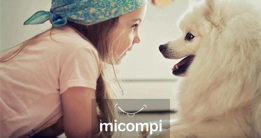
There are two types of insurance for dogs, the first, is civil liability, commonly known insurance for potentially dangerous dogs, these insurances cover damages to third parties that the dog may cause and are mandatory for certain breeds according to the legislation of the autonomous communities.
The second typology is the one that concerns us in this post, veterinary care insurance, with them we can save up to 50% in veterinary expenses since we can take it as many times as we want to consultations, even if it is necessary to perform some surgical intervention without additional expenses.
Our dog is more than just a pet, it is one more of the family and therefore, it is so important not to drown in bills if an accident occurs. In order to find the product that best suits the needs of the user is Micompi, the Spanish pet insurance comparator, in which in just two minutes you can contract your policy with the minimum price guaranteed.
This portal also has a charitable purpose, with which it undertakes to donate 1 euro for each insurance contracted through its website to an animal protector.
In these dates so close to Christmas, many people consider it a good gift option to buy or adopt a dog. Experts recommend taking into account several important points before taking the plunge.
The purchase and adoption of animals is a decision that requires a commitment, and what might seem like an act of solidarity, can sometimes become a nightmare, and who bears the brunt is the animal adopted, point out the animal protection associations.
Questions that experts advise to ask yourself before giving or adopting a dog:
Do you give the dog to satisfy the illusion of a child?
Children are excited to share their lives with a dog or enlarge the family, a tender feeling that many of us have had, committing to walk it daily and take care of it. Keep in mind that although their intention is good, children are not mature enough to make this decision and take responsibility. The decision to have a dog or any other animal must be in common agreement with all members of the family, for the happy coexistence with the animal.
What kind of dog do I adopt?
Christmas should not be the excuse to adopt a dog of a certain breed, of which we do not know its characteristics and its needs can not be adequately covered. According to José Luis Torres, veterinarian of the Society for the Protection of Animals and Plants of Madrid, “this approach is usually one of the most common mistakes among dog adopters”.
Another frequent mistake is to adopt a dog when you do not have enough free time to take care of it. A dog is a living being with needs and one of them is to exercise. We must be aware of this before planning to enlarge the family.
Is the dog a surprise gift?
It is not advisable to give a dog to someone who has not even planned to have it or who although he has ever thought about it, is not ready yet. Having a pet requires prior planning. Analyze if time, space and if it will continue to be so in the future and it is also necessary to consult it previously with all the members of the household, as we already mentioned. “These surprise gifts end in abandonment,” says Torres.
Another point to keep in mind when adopting a dog at Christmas is to let go and relax too much for the fact of being on vacation. Torres warns that “it is a mistake that the dog adopted on vacation spends all the time accompanied, because when the routine is resumed, he will not be accustomed to loneliness and could develop behavioral problems.
Christmas can also be a good time to plan the future life with our new friend, taking into account the real schedules of the family members and thus be able to cover their needs. And as a member of the family that he is we can take care of him as such, with affection and respect. They will thank you all your life.
Source: consumer.es
The most common cause of femur fracture is a blow to the thigh bone area. Unless you have witnessed the accident firsthand, the first symptom or suspicion that the dog has broken its femur may be lameness. If the femur fracture is not repaired, the dog can have serious complications. Let’s explain how recognize and treat femur fracture in dogs.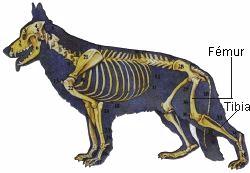
- Dogs that suffer this injury may experience lameness in the injured paw or may become immobile because of the pain they are suffering.
- Take the dog to the vet and try to let them know of your arrival. Ask someone to help you get the dog into the car. This will prevent your dog from walking on the injured paw.
- The veterinarian will need to take x-rays to confirm if there is a fractured femur. It will also determine if you can give your pet painkillers to relieve the pains.
- He or she will likely recommend surgery to repair your femur fracture. Unlike other fractures, the femur stabilizes more successfully after surgery. This lesion cannot be stabilized with a splint or cast, so surgery should be seriously considered.
- Once back home the activity should be very limited. Reduce the walk when you take it out to relieve itself. Keep the area warm and prevent it from resting on hard or cold surfaces. This will aid in healing and prevent further damage.
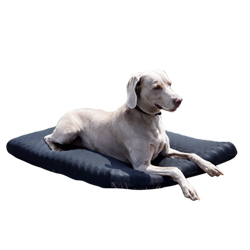 Choose a quiet place for the recupyour dog’s eration. Dogs in rehabilitation need a quiet place to heal. Let him rest in a good bed and hold his favorite toys. Encourage your pet to rest and remind visitors that the dog needs to rest.
Choose a quiet place for the recupyour dog’s eration. Dogs in rehabilitation need a quiet place to heal. Let him rest in a good bed and hold his favorite toys. Encourage your pet to rest and remind visitors that the dog needs to rest.
Don’t try to stabilize the fractured femur at home. Some dog owners try to splint or plaster the limb at home. Always check with your veterinarian about the options available.
A man is arrested after 2 months of investigation for burning, beating and splitting the tongue in half of a pit bull, in the worst case of animal torture seen by the association that rescued him.
They found the dog lying on a sidewalk in Quincy, in the United States, on August 31. He was a tabby, white pit bull puppy that lived barely. The vet couldn’t do anything for him. His body had 17 wounds from blows, cuts and burns and a multitude of broken bones. The matter, which in other countries would go unnoticed, could end in an exemplary sentence of 55 years in prison, five years for each of the 11 charges of abuse faced by the abuser.
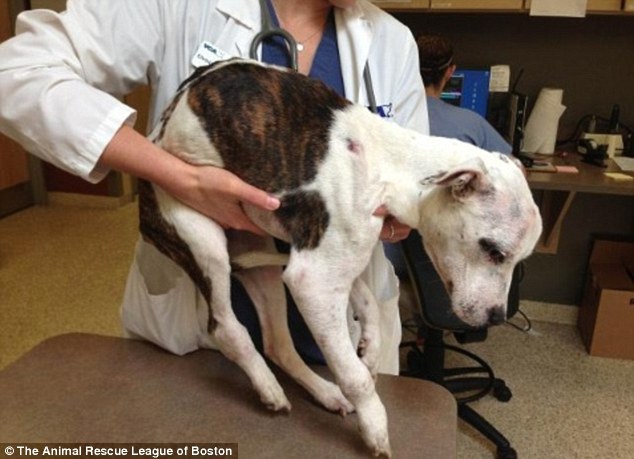 The alleged torturer of the puppy detained by police is Radoslaw Czerkawsky, a 32-year-old Polish immigrant who was caring for an elderly woman. The defendant, who has pleaded not guilty to the charges, has been given a bail of one million dollars and his passport has been withdrawn.
The alleged torturer of the puppy detained by police is Radoslaw Czerkawsky, a 32-year-old Polish immigrant who was caring for an elderly woman. The defendant, who has pleaded not guilty to the charges, has been given a bail of one million dollars and his passport has been withdrawn.
At first no more was known about the dog. The news of his torture went around the United States, appeared in most of the news and gathered more than 70,000 people who called for the arrest of the culprit and who have followed the process closely. The dog was named Kiya and had been donated to a family who sold it to Czerkawsky, according to sources close to him.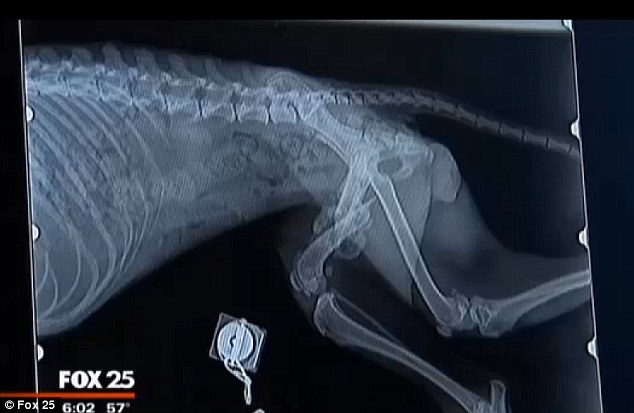
The agents followed the trail of the animal until they found the alleged torturer. They used all kinds of means for an investigation that ended when they found traces of hair and blood in the suspect’s house and these coincided with those of the dog in DNA analysis.
Sources: Dailymail.co.uk, Abc.es, Fox
The animal had lost a leg in an accident before being found by a retiree willing to help him. Not finding the right prosthesis, veterinarians resorted to a particular solution.
The animal was seriously injured in Neuried, southern Germany, thanks to an ingenious solution with Lego pieces it was able to recover its ability to walk.
“Schildi”, as the turtle was named by those who received it after its accident, had lost one of its legs and with that its mobility and autonomy, this fact could have led to its death in a short time, but its fate changed radically with an original low cost prosthesis.
A retiree from the city of Sttutgart found “Schildi” and transferred her to the Animal Shelter of Neuried, where they were able to cure what was left of the front leg, strongly affected by an infection.
The veterinarian Marcelo Bürkle did not rest in his efforts to find a solution to the lack of a prosthesis on the market for the lost leg, until he saw in his clinic the daughter of one of his employees with Lego construction toys.
The doctor used his creativity and stuck a lego wheel in the place of the turtle’s paw, which allowed him to regain mobility and thus save his life.
Source: www.infobae.com




